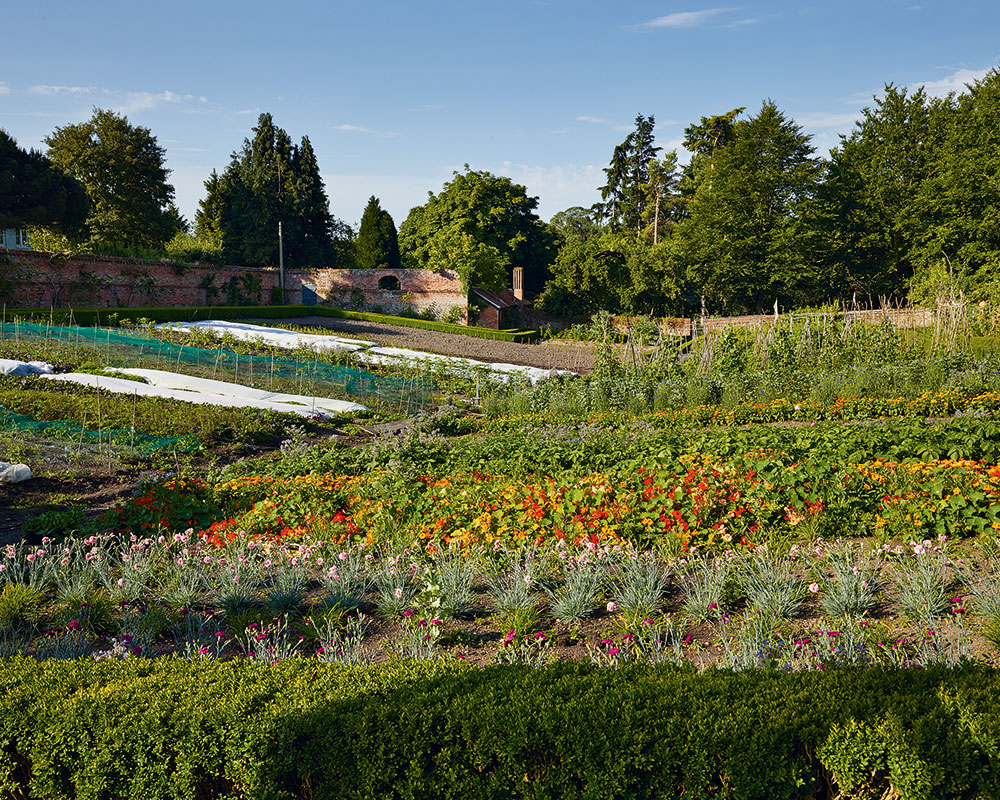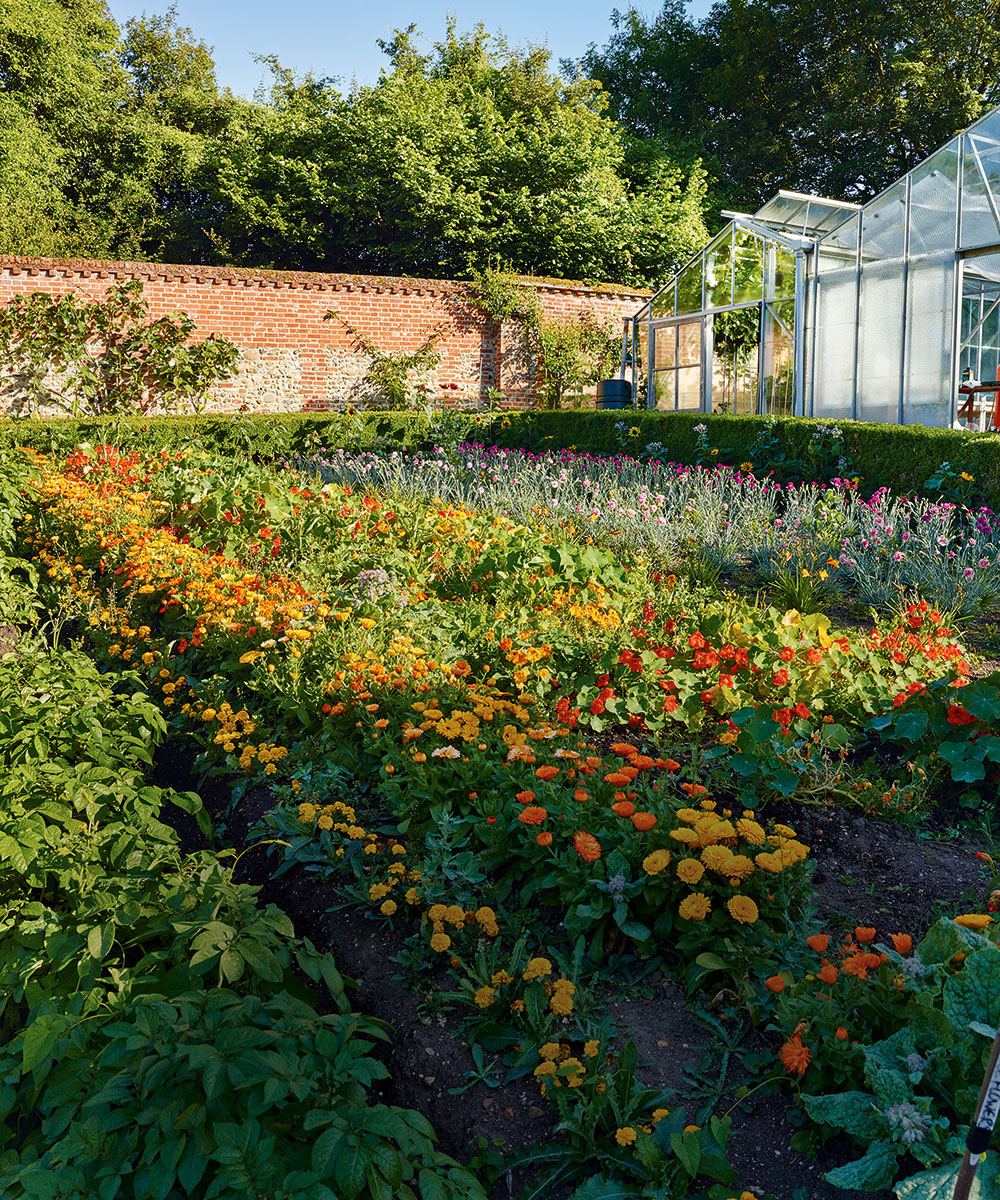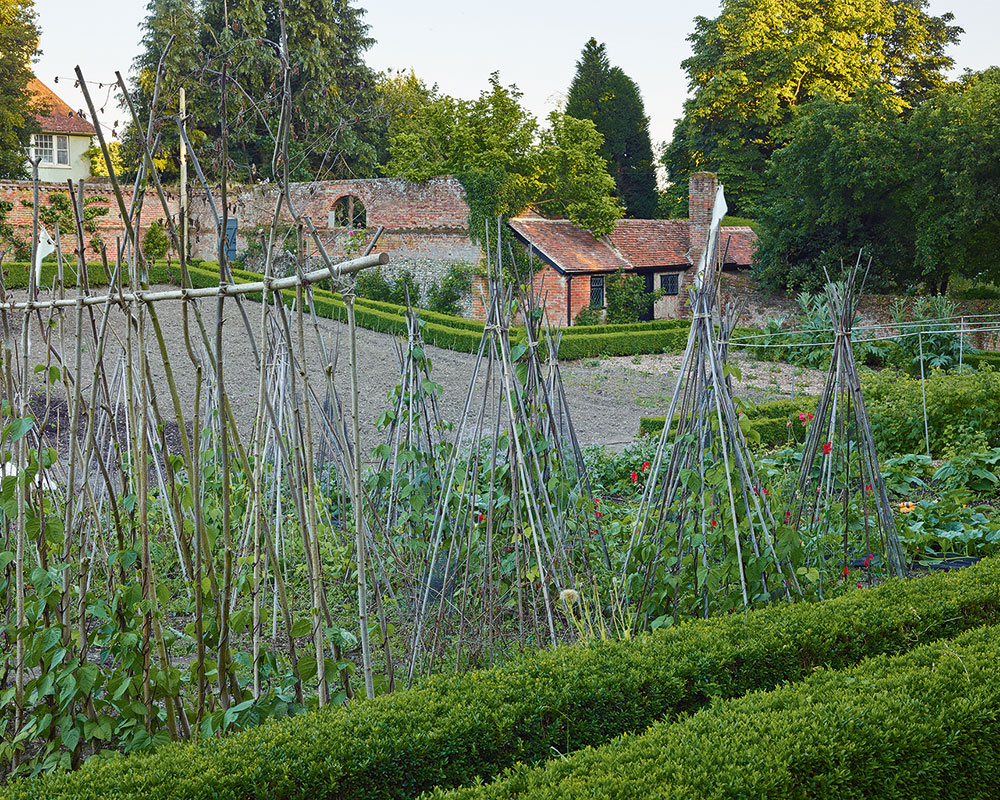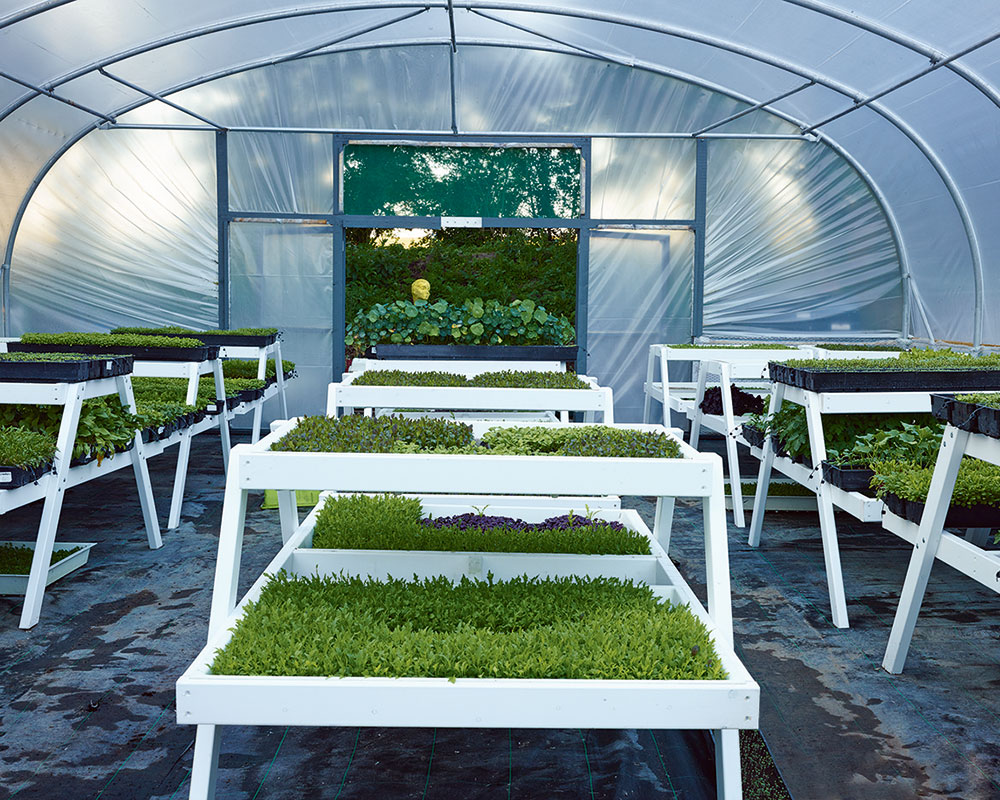Tour the bountiful kitchen garden at Brent Eleigh Hall in Suffolk
Herbs, fruit, vegetables and honey are just some of the treasures that are once again, being grown and harvested within the Victorian walls of the kitchen garden at Brent Eleigh Hall in Suffolk.


Described by art historian Nikolaus Pevsner as 'a puzzling and very attractive house', Brent Eleigh Hall, near Lavenham in Suffolk, is Grade I listed with a two-acre walled kitchen garden that has been restored to life.
Like so many country estates, the walled garden had grown into a dilapidated state until very recently. Now, this quiescent garden is being awakened by the joint forces of its new owners and the Mayfair restaurant, Novikov, to secure the garden’s future.

Putting a date to the walled space is difficult as it is not included in the listing (kitchen gardens were often omitted from surveys as they were not recognised as being important features). It is probably Victorian, however, and it has some lovely features that were an instant attraction to its new head gardener, the satisfyingly named Merriel Gardiner, previously of the Lost Gardens of Heligan and Heveningham Hall.
See our Garden room ideas –innovative schemes that are bright and inviting

THE LAYOUT
Merriel loves the preciousness of walled gardens, seeing them as secret places, opportunities to open a door into a contained world that reeks of history.
Here at Brent Eleigh, the walled garden is doubly protected, with a shelter belt of mature trees running round the outside of the wall, while inside, the ground is arranged into two sides with a central valley from which beds rise up on either side to the west and east walls.
This unusual configuration, which Merriel describes as being 'like a butterfly', is a format that helps combat the frost pockets that are a feature of this area of the country: the cold air, instead of resting, caught inside the walls, rolls down the garden valley, on and out through the gate.
Design expertise in your inbox – from inspiring decorating ideas and beautiful celebrity homes to practical gardening advice and shopping round-ups.

SPECIAL FEATURES
The garden includes a piggery (which may have additions by Edwin Lutyens), which Merriel and her team hope to turn into a mushroom house, a bothy with – most unusually – a consecrated chapel attached, three greenhouses which have been newly restored, and a well.
In Victorian times, a garden boy would have been sent up to the house each day, to ask the cook what would be needed from the gardens for that day and the requested vegetables would have been washed at the well before being delivered to the kitchen door.
These days at Brent Eleigh Hall, Merriel has busy team of 10 gardeners including three working full time on micro herbs, and a handyman who is kept busy repointing the Victorian walls and putting up fruit nets.
Common to all of them is a genuine love of food and cooking, with an interestingly high number of active chefs amongst them, and the garden’s produce is once more being handpicked and delivered on a daily basis, albeit within hours by refrigerated van to the Novikov in Mayfair.

KITCHEN GARDENS – A POTTED HISTORY
- The history of kitchen gardens can be traced back to early Greek and Roman cultures, with the practice of enclosing them for protection from animals and for security from theft also ancient.
- By the 18th century, most country estates would have had a kitchen garden to provide fruit, vegetables, herbs and flowers all year round.
- Stephen Switzer published The Practical Kitchen Gardiner in 1727, in which he combined the economics of the kitchen garden with the aesthetics of garden design.
- Switzer said fruit gardens were to be kept 'private; since by this Means no Body dare walk but the Owner himself, for Fear of losing his Fruit'. The most likely culprits were said to be the poets; James Thomson was found 'lounging around…with his hands in his pockets, biting off the sunny sides of the peaches'.
- One acre of kitchen garden was thought to be sufficient to supply produce for 12 people; two to three gardeners were needed per acre.
- During the 18th century, some kitchen gardens were moved away from the house, for aesthetic reasons as they cluttered the new landscape style and ruined the view, or to give them a south-facing position more conducive to growing produce.
- The heyday of the kitchen garden was 1800-1900; the Industrial Revolution brought in technological advances and innovations that helped the Head Gardener grow more produce more efficiently.
- Queen Victoria combined and relocated all the Royal kitchen gardens to Windsor Castle by 1844. The resulting garden was huge (31 acres) and it had 150 gardeners to tend it.
- Garden tunnels were sometimes built to protect the delicate Victorian houseguest from seeing labourers in the garden. At Calke Abbey, a tunnel that runs from the kitchen garden to the back sheds still survives.
- During and after the World Wars, social and economic changes caused many country estates to fall into decline. The kitchen garden became an expensive luxury no longer needed by the household.

SeeThe top 10 garden trends for 2020, according to the Society of Garden Designers
AN EDIBLE GARDEN FOR MODERN TIMES
The micro herbs are an important element on the Novikov menu and the restaurant has its own full-time staff of three, working under head gardener Charlie Munroe, to look after these particular crops. There is a three-week turnaround from sowing to table and 45 varieties of herbs and leaves are grown for the restaurant. Charlie has designed special benches to grow micro herbs and had them custom made locally.
Alongside the micro herbs, edible flowers, salad leaves and mixed herbs are in full production. This first year has given crops of radish, kale, carrots, red admiral potatoes, asparagus and beans, with a fruit net that includes strawberries and raspberries. The globe artichokes are under planted with white currants and soon there will be tomatoes grown from seeds sent from Italy by the family of Marco Torri, head chef at Novikov’s Italian restaurant.
During the garden’s first full summer, the peach house has been full of velvety plump fruit and this autumn, orchard fruits of pears and apples are ripening on the garden’s south wall.



Jennifer is the Digital Editor at Homes & Gardens, bringing years of interiors experience across the US and UK. She has worked with leading publications, blending expertise in PR, marketing, social media, commercial strategy, and e-commerce. Jennifer has covered every corner of the home – curating projects from top interior designers, sourcing celebrity properties, reviewing appliances, and delivering timely news. Now, she channels her digital skills into shaping the world’s leading interiors website.